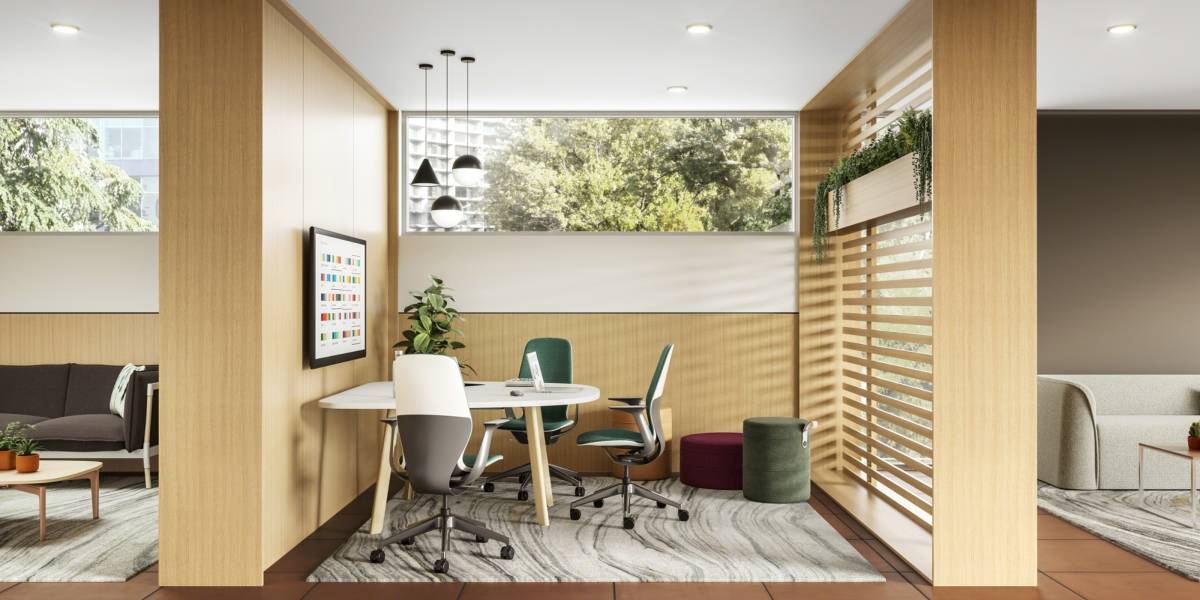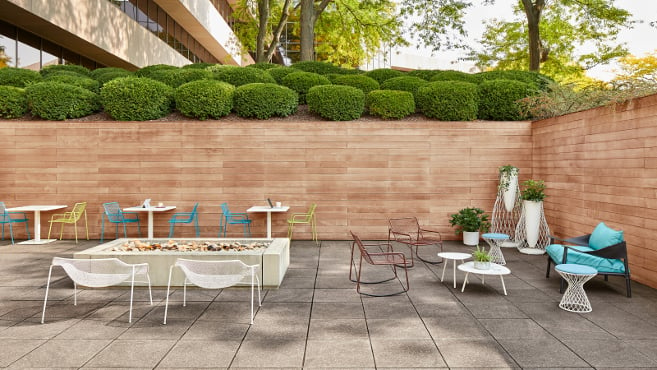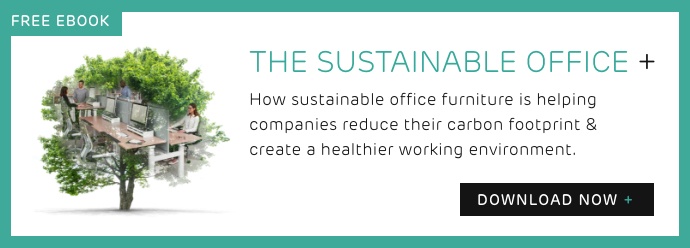The push towards more sustainable practices is having a big impact on office design. Companies are looking at more sustainable ways to fit out or refurbish their office space, for example by choosing energy-efficient lighting and office furniture made from recycled materials.
Some companies are taking it a step further and looking to achieve green building standards, certifications or rating systems, such as BREEAM, LEED, SKA and WELL.
These methods exist to help guide, demonstrate and document efforts to create sustainable workplaces. For companies adopting these methods, there are many benefits, including reduced energy costs and a healthier environment for their employees.
Here, we take a closer look at BREEAM, LEED, SKA and WELL and how they differ from each other.
BREEAM (Building Research Establishment's Environmental Assessment Method)
BREEAM was the world’s first green building rating system. Launched in 1990, it was created as a cost-effective means of recognising the value of sustainable development.
BREEAM started out as a certification process for new buildings but now also covers fit-outs and refurbishments.
The technical standard is divided into 4 parts. Projects are assessed to a combination of these parts, depending on the scope: External Envelope, Core Services, Local Services and Interior Design.
Sustainable value is measured in a series of 10 categories:
- Management
- Health & Wellbeing
- Energy
- Transport
- Water
- Materials
- Waste
- Land Use and Ecology
- Pollution
- Innovation
Points are awarded for things like reusing furniture, using timber that is FSC or PEFC certified, and furniture items with EPDs (Environmental Product Declarations).

A BREEAM Assessor assesses the project and submits their assessment to the certification body (BRE) for a decision.
The main output from a BREEAM assessment is the rating, which reflects the performance achieved by the project as measured against the standards and its benchmarks. The highest rating is 6 stars, based on an ‘Excellent’ score of more than 85%.
LEED (Leadership in Energy and Environmental Design)
After the launch of BREEAM, the US Green Building Council followed suit and launched LEED in 1998.
Like BREEAM, LEED is available for all building types and phases, from new construction to interior fit-outs.
Projects pursuing LEED certification earn points for various green building strategies across 5 categories:
- Sustainable Sites
- Water Efficiency
- Energy and Atmosphere
- Materials and Resources
- Indoor Environmental Quality
Points are earned by gaining credits for things like:
- Responsible sourcing of raw materials
- Providing individual thermal comfort controls for at least 50% of individual occupant spaces
- Providing outdoor space greater than or equal to 30% of the total site area

Based on the number of points achieved, a project earns one of four levels of certification: Certified, Silver, Gold or Platinum.
Unlike BREEAM, there is no need for an independent assessor. The qualification to become a LEED assessor is open to all.
SKA
SKA is a rating system launched in 2009 by RICS (Royal Institution of Chartered Surveyors).
SKA was developed with the input of designers, contractors, corporate occupiers, managing agents and consultants.
Whilst there are some similarities to BREEAM and LEED, SKA is different in that it is project-driven and only applies to fit-out and refurbishment projects, irrespective of the base building. As such, SKA is the only tool that measures only what is within the specific project scope.
A SKA rating covers 100 individual measures of good practices across 8 sustainability issues:
- Energy use
- Carbon dioxide emissions
- Materials
- Waste
- Water
- Wellbeing
- Pollution
- Transport
Examples of criteria include:
- At least 80% of all removed chairs must be reused either on or off site or recycled through a closed loop scheme (e.g. manufacturer’s take back scheme), and the remaining 20% must be diverted from landfill
- All products must have low or zero VOC emissions
- At least 70% of materials must be supplied with an EPD or Cradle to Cradle certificate
The assessment process involves identifying measures in scope, gathering evidence to prove that what had been specified has been delivered and that performance and waste benchmarks have been achieved. Projects are awarded either a Bronze, Silver or Gold SKA rating, plus a percentage score.
WELL
The WELL Certification was first launched in 2014 and is the world’s first building standard to focus on enhancing people’s health and wellbeing through the built environment.
The most up to date version of the standard is WELL v2, which measures 11 concepts:
- Air
- Water
- Nourishment
- Light
- Movement
- Thermal Comfort
- Sound
- Materials
- Mind
- Community
- Innovation
‘Movement’, for example, encourages physical activity and ergonomic comfort. One of the areas it focuses on is ergonomic workstation design, with the criteria stating that for at least 25% of workstations, employees should have the ability to alternate between sitting or standing. This is either through height adjustable desks or desktop height adjustment stands.
-jpg.jpeg)
As another example, ‘Materials’ focuses on reducing human exposure to chemicals that may impact health during the construction, remodelling, furnishing and operation of the building. One criteria is centred on restricting VOC emissions from furniture, architectural and interior products.
Projects pursuing WELL certification earn points based on performance outcomes against the concepts, and can achieve one of four certification levels: Bronze, Silver, Gold or Platinum.
What are the key differences between them?
The key differences between the four standards are:
- BREEAM, LEED and WELL apply to all phases of the build and cover new builds and fit-out/refurbishment, where as SKA is project driven and only covers fit-out/refurbishment
- BREEAM, LEED and SKA are sustainability led, while WELL is wellbeing led
- BREEAM, SKA and WELL have licensed assessors who examine the evidence against the criteria, but with LEED, the design team collects the evidence and submits it
How do you choose the right fit?
When it comes to BREEAM versus LEED, historically, BREEAM has been the method of choice in the UK because it is better adapted to UK legislation and standards. However, LEED is considered the worldwide leader everywhere except the UK, though it is starting to gain grounds here too.
SKA is generally more flexible than BREEAM and LEED, as it only scores the project on good practice measures that are relevant to the project. Assessor fees also tend to be lower. As such, SKA tends to be the preference on smaller projects.
Ultimately, the design process should come first, and then you can look to see which system works best for your design.
Some companies are choosing to pursue more than one method. In fact, the institutions behind BREEAM and WELL have created the guide ‘Assessing Health and Wellbeing in Buildings’ to make it easier for those wishing to obtain both a certified BREEAM rating and a WELL Certified rating.
Similarly, LEED and WELL can also work alongside each other. There is a whole body of guidance to show how LEED can assist in meeting WELL and vice versa.
Sustainability has never been more important for businesses than it is today, as they try to be more environmentally conscious and reduce their carbon footprint. Adopting methods like BREEAM, LEED, SKA or WELL helps companies to achieve those goals.
IE has helped a number of clients seeking these certifications to identify products that can contribute to the criteria. To find out how we can help you with your project, get in touch.










